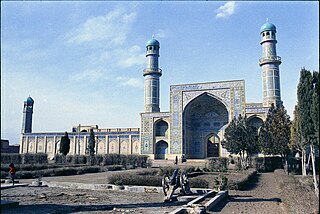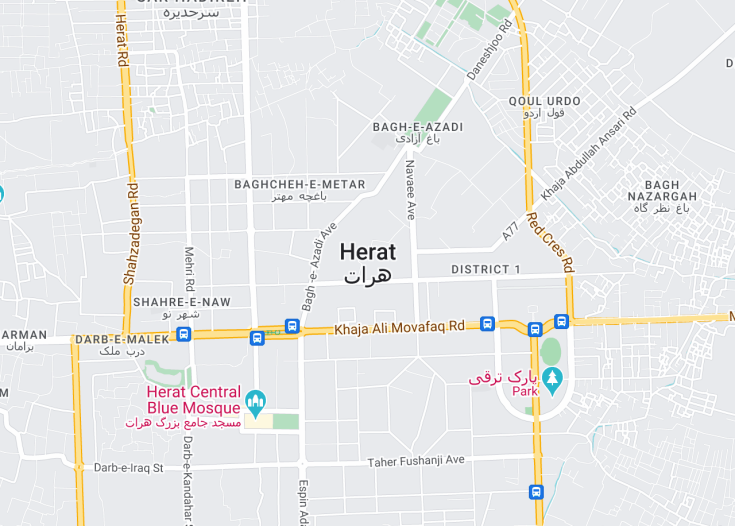Herat, an ancient city in Afghanistan, stands as a testament to the rich history and cultural heritage of the region. Known for its majestic architecture and historical significance, it has been a focal point of various civilizations for centuries. The city’s landscapes are dominated by the breathtaking Herat Citadel and the Grand Mosque of Herat, both epitomes of Islamic architecture. As a crossroad of many trade routes, Herat offers visitors a unique glimpse into the traditional Afghan life, bustling bazaars, exquisite handicrafts, and a vibrant arts scene, making it an intriguing destination for history enthusiasts and culture seekers alike.
When visiting Herat, ensure to explore its ancient bazaars. They offer a unique shopping experience with a plethora of traditional handicrafts perfect for souvenirs.
Plan your visit in the spring or early autumn to enjoy Herat’s pleasant weather, ideal for exploring its historical sites and local culture comfortably.
Top things to do & see in Herat
Select the following sights and activities to discover best tickets and tours available in Herat.
Herat: A Blend of History and Culture
| Country | Afghanistan |
| Time in Herat | GMT+4:30 |
| Language spoken | Dari |
| Population | 556,205 (estimate from the latest census) |
| Currency | Afghani (AFN) |
| Airports |
|
Herat, once a bustling center of Persian culture, still resonates with the echoes of poets and scholars who walked its storied streets. This historic city in western Afghanistan serves as the administrative center of Herat Province, located near the border with Iran. With its rich history that stretches back to ancient times, Herat represents an essential thread in the cultural tapestry of Afghanistan.
Where is Herat?
Situated in the fertile valley of the Hari River, Herat boasts a strategic location that has historically served as a gateway between the Iranian Plateau and Central Asia.
| Route | Distance by car | Time by car |
|---|---|---|
| Kabul to Herat | 640 km | 10 hours |
| Mazar-i-Sharif to Herat | 812 km | 13 hours |
| Kandahar to Herat | 656 km | 11 hours |
What is Herat famous for?
Herat is renowned for its stunning Islamic architecture, such as the Friday Mosque, which is one of Afghanistan’s grandest and a magnificent example of Islamic artistry. Additionally, the city’s historical status as a center of Sufism attracts visitors interested in its spiritual heritage.
History
Pre-Islamic Era to Islamic Conquest (Before 651 AD)
Herat, an ancient city in Afghanistan, has roots traced back to Achaemenid Empire, under the name of Artacoana. In the successive years, it flourished as a prominent stop on the Silk Road which connected trade between Asia, the Middle East, and Europe. Over centuries, Herat saw conquests from Alexander the Great and later became a key city of the Kushan Empire, renowned for its strategic and commercial significance.
Islamic Era (651 AD – 1500s)
The introduction of Islam in the 7th century transformed Herat both culturally and religiously. It became part of the Abbasid Caliphate and later the Ghaznavids turned it into a hub for intellectual developments. The Timurid period, beginning in the late 14th century, marked Herat’s golden age, making it a center for art, science, and learning. The city’s architectural landscape flourished, becoming adorned with exquisite mosques and madrasas.
Modern History (1700s – Present)
In the modern era, Herat encountered frequent power shifts. It initially thrived under Safavid rule, then passed through the hands of various Afghan rulers contributing to its rich architectural and cultural heritage. The 19th century Anglo-Afghan wars brought significant European influence. Even today, amidst challenges, Herat stands resilient, retaining its historical grandeur and continuing as an educational and economic center in Afghanistan.
Visit Herat
What to see and do in Herat
Herat, a city enriched with history, offers visitors a multitude of stunning architectures and a peek into Afghanistan’s rich cultural tapestry. Key attractions include the Herat Citadel, originally built by Alexander the Great, and the splendid Friday Mosque, showcasing intricate Islamic tile work. The city’s ancient bazaars also provide a vibrant atmosphere where one can purchase traditional crafts and spices. For art lovers, the Herat Museum holds precious artifacts reflecting the city’s illustrious history.
- Explore the Herat Citadel
- Visit the Friday Mosque
- Stroll through ancient bazaars
- Discover treasures at Herat Museum
Festivals and Events in Herat
Herat hosts various cultural festivals and events reflecting its rich heritage. Notable among them is the Nowruz festival, celebrated in March, marking the Persian New Year with music, dances, and traditional food. These events provide a deep insight into the vibrant local culture and are a spectacle not to be missed.
Best time to visit Herat
The ideal time to visit Herat is during the spring (March to May) or autumn (September to November). These months offer mild weather conditions, perfect for exploring the city’s landmarks and participating in outdoor cultural events seamlessly.
Is Herat worth visiting?
Indeed, Herat is worth visiting for anyone eager to delve into a city steeped in history and culture. Beyond its array of historic sites and lively bazaars, it offers a unique opportunity to witness a blend of ancient traditions and modern influence in Afghanistan. The city’s resilience and rich cultural tapestry make it a fascinating destination for historians, art lovers, and travelers alike.









